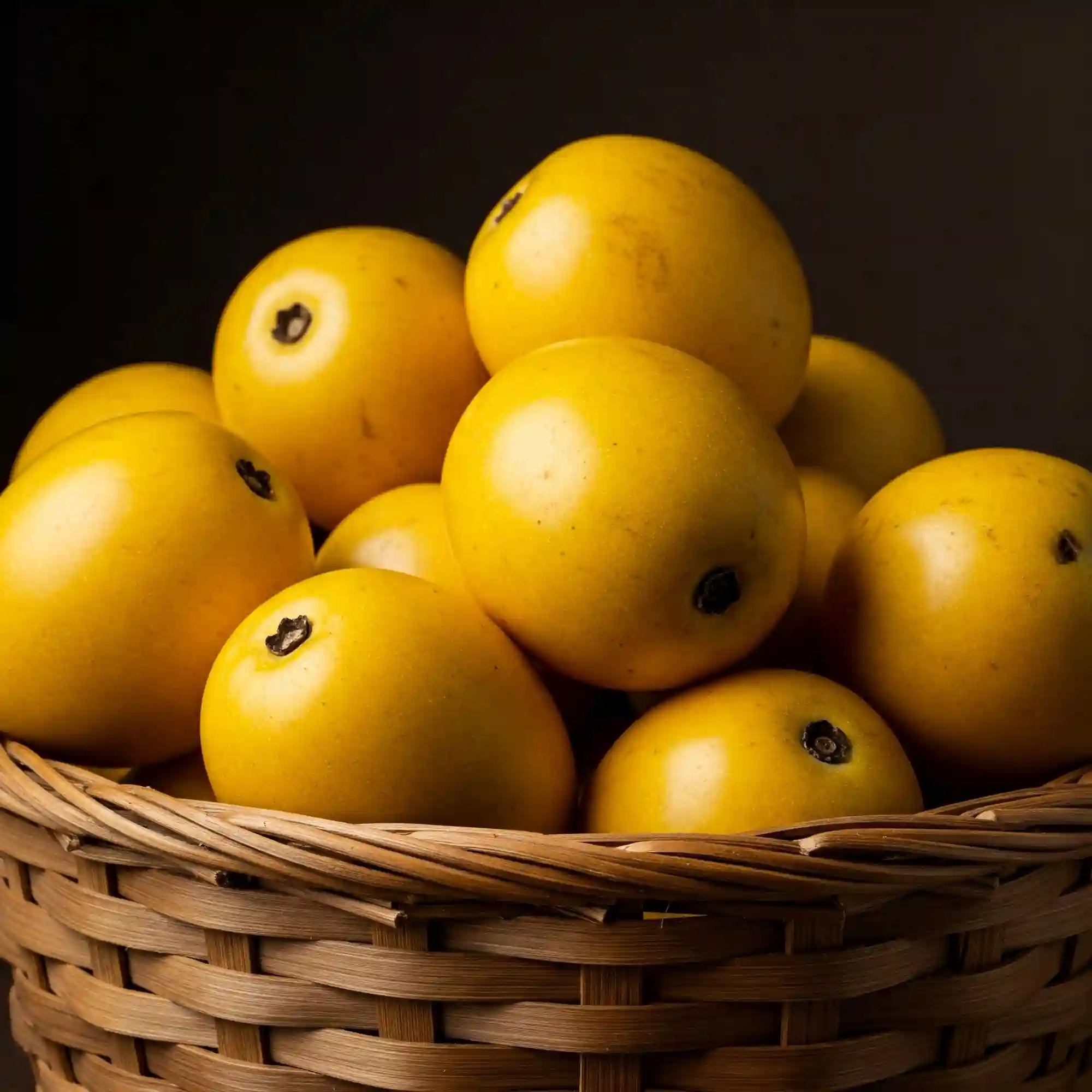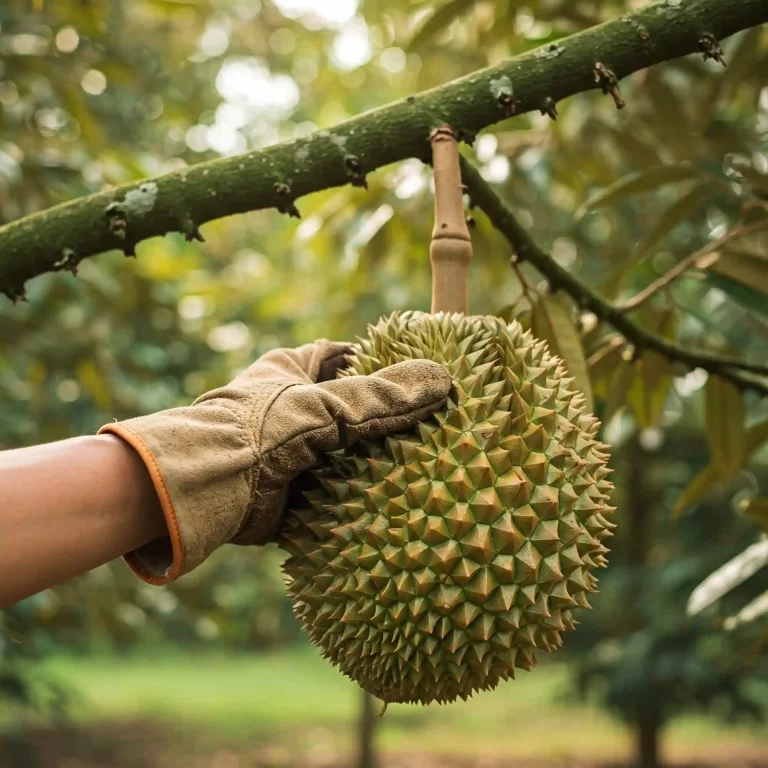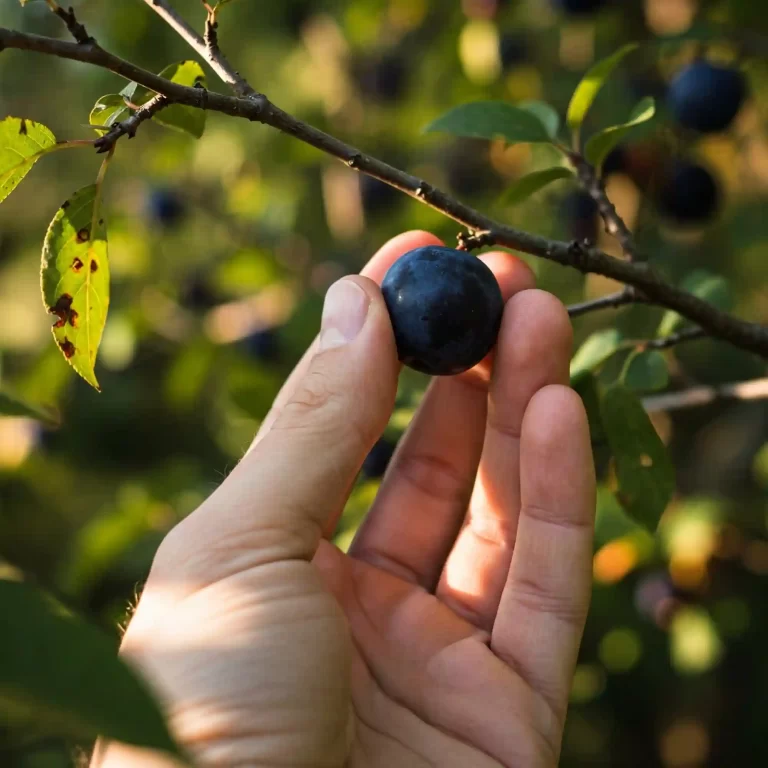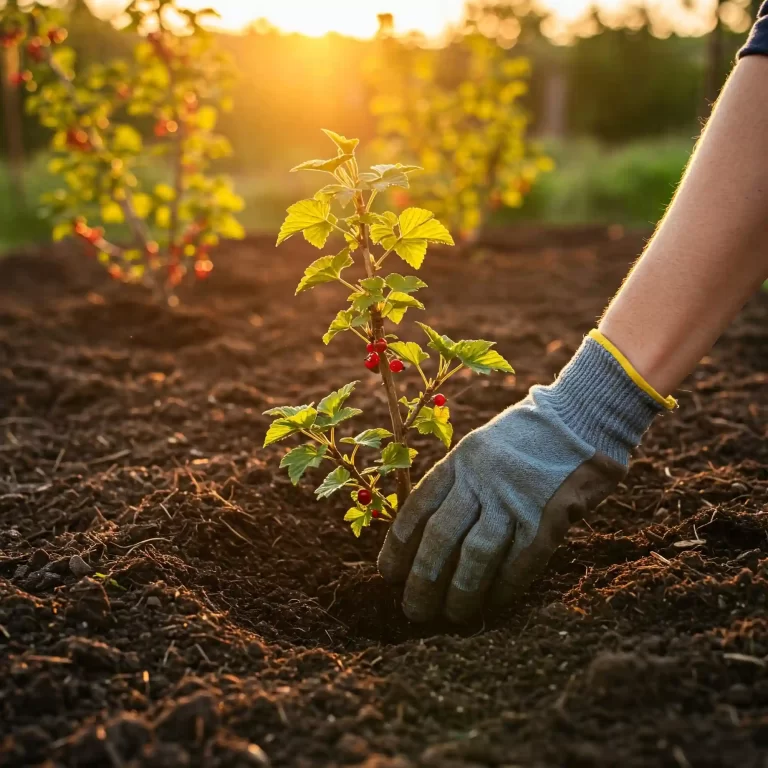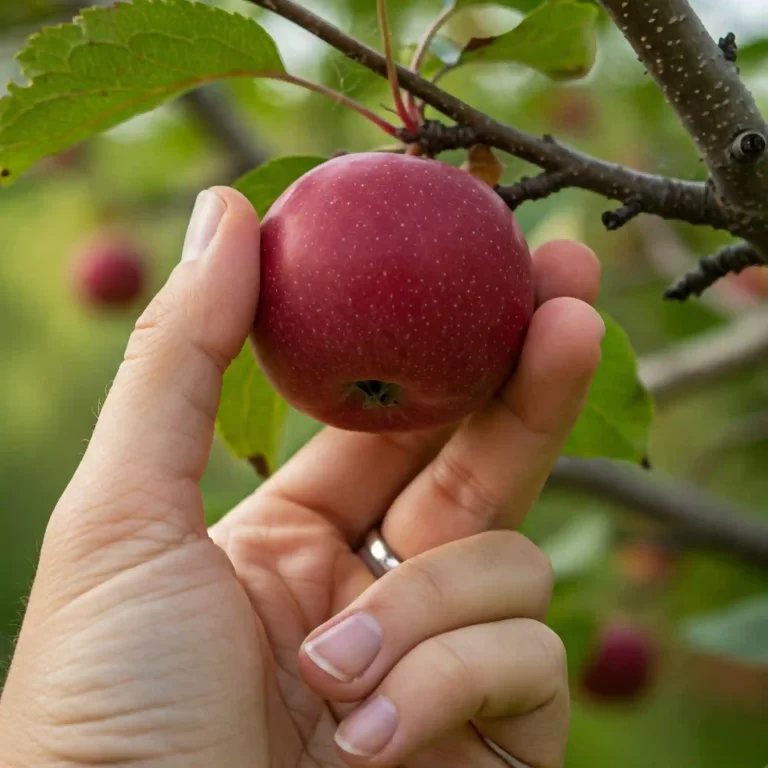Are you tired of the same old fruits lining your supermarket shelves? Do you crave a taste of the exotic, a burst of tropical flavor that transports you to the heart of the Amazon? You’re not alone. Many gardeners, like myself, yearn for unique and rewarding growing experiences. The challenge, however, lies in navigating the complexities of cultivating unfamiliar species. But don’t worry, I’m here to guide you. Together, we can unlock the secrets to growing Araza fruits right in your backyard, transforming your garden into a tropical oasis.
1. Understanding the Araza Fruit: A Tropical Delight
The Araza fruit, scientifically known as Eugenia stipitata, is a true gem of the Amazon Rainforest. This remarkable fruit, native to regions spanning Colombia, Brazil, Peru, and Ecuador, offers a unique flavor profile that sets it apart from other tropical fruits. I remember the first time I tasted an Araza; the tangy sweetness, with hints of citrus and guava, was an explosion of flavor. It’s no wonder that locals cherish it as a culinary treasure.
The Araza fruit tree thrives in the warm, humid conditions of the Amazon, where it can reach heights of up to 15 meters. The tree itself is a sight to behold, with glossy, dark green leaves that create a dense canopy. During the blooming season, the tree is adorned with delicate white flowers, attracting pollinators like bees and butterflies. The fruit develops in clusters, ripening to a vibrant yellow color as it matures.
The fruit itself is round or oval, with a thin, yellow skin that encases a juicy, acidic pulp. This pulp is not only delicious but also packed with nutrients, including vitamins A and C, as well as antioxidants. The seeds, while numerous, are small and easily removed from the pulp.
Culinary Uses:
- Fresh Consumption: The Araza fruit is often eaten fresh, straight from the tree. The slightly tart flavor provides a refreshing and invigorating experience. You can simply peel the skin and savor the juicy pulp, or enjoy it with a sprinkle of salt or sugar to enhance its sweetness.
- Juices and Beverages: The tangy flavor of Araza makes it an excellent ingredient for juices and smoothies. It can be blended with other fruits, such as pineapple, mango, or guava, to create a vibrant and refreshing beverage.
- Jams and Preserves: Araza fruit is also used to make delicious jams and preserves. The high pectin content in the fruit helps to set the jam, resulting in a thick and flavorful spread.
- Desserts: The unique flavor of Araza can add a tropical twist to various desserts. It can be used to make sorbets, ice creams, and even pies. The slightly tart flavor provides a refreshing contrast to the sweetness of other dessert ingredients.
Nutritional Benefits:
- Rich in Vitamin C: Araza fruit is an excellent source of vitamin C, a powerful antioxidant that supports a healthy immune system. Vitamin C plays a crucial role in collagen production, wound healing, and iron absorption.
- Antioxidant Properties: The fruit is also rich in antioxidants, such as flavonoids and carotenoids. These compounds help protect the body from damage caused by free radicals, reducing the risk of chronic diseases.
- Dietary Fiber: Araza fruit contains dietary fiber, which aids in digestion and promotes gut health.
- Vitamins and Minerals: In addition to vitamin C, Araza fruit provides a good source of other essential vitamins and minerals, including vitamin A, potassium, and magnesium.
Araza fruit cultivation is not just about growing a plant; it’s about bringing a piece of the Amazon’s biodiversity to your own garden. For you, this means access to a unique fruit, a conversation starter, and a healthy addition to your diet. Growing Araza fruits can be a rewarding experience, connecting you with the natural world and providing you with a taste of the exotic.
2. How to Plant Araza: Seed Selection and Germination
Starting your Araza fruit journey begins with seed selection and germination. While you can purchase young saplings from nurseries, propagating Araza from seed can be a rewarding experience.
Seed Selection:
- Freshness is Key: Obtain fresh Araza seeds from ripe fruits. Ideally, the fruits should be harvested directly from the tree.
- Viability Check: Ensure the seeds are viable by checking for any signs of mold or damage. Healthy seeds should be firm and plump.
- Seed Extraction: Carefully remove the seeds from the fruit pulp. You can do this by hand, but be gentle to avoid damaging the delicate seeds.
Preparing Seeds for Germination:
- Clean the Seeds: Wash the seeds thoroughly with clean water to remove any remaining pulp. This helps prevent the growth of mold and fungus.
- Scarification: The hard outer seed coat can hinder germination. To overcome this, scarify the seeds by gently nicking the seed coat with a sharp knife or using sandpaper. Be careful not to damage the embryo inside.
- Soaking: Soaking the seeds in warm water for 24-48 hours can help soften the seed coat and promote germination. Change the water regularly to prevent bacterial growth.
Germination Process:
- Choose a Suitable Medium: Use a well-draining potting mix that is rich in organic matter. You can also use a mixture of perlite and peat moss.
- Sow the Seeds: Plant the seeds about 1/2 inch deep in the potting mix. Keep the soil moist but not waterlogged.
- Provide Warmth and Humidity: Place the seed containers in a warm, humid environment. You can use a propagation tray or cover the containers with a plastic dome to maintain humidity.
- Maintain Optimal Conditions: Keep the soil consistently moist, but avoid overwatering. A temperature between 70-80°F (21-27°C) is ideal for germination.
- Patience is Key: Germination can take several weeks or even months. Be patient and continue to monitor the seeds regularly.
Once the seedlings have developed a few true leaves, they can be transplanted into larger pots or directly into the ground, depending on your climate and space availability. Remember to handle the seedlings with care to avoid damaging their delicate roots.
Growing Araza fruits from seed can be a rewarding experience, allowing you to connect with the plant’s lifecycle from the very beginning. By following these steps and providing the necessary care, you can successfully germinate your Araza seeds and embark on your journey towards cultivating a thriving Araza fruit tree.
3. Soil Requirements: Creating the Ideal Growing Environment
Providing the right soil conditions is crucial for healthy Araza fruit tree growth. These tropical trees have specific preferences that need to be met to ensure optimal development and fruit production.
What is the Best Soil for Growing Araza Fruits?
Araza trees thrive in well-drained, acidic soils. Ideally, the soil pH should be between 5.5 and 6.5. Soils that are too alkaline can lead to nutrient deficiencies and hinder fruit development.
Soil Composition:
- Organic Matter: A rich organic content is essential for healthy soil. Organic matter, such as compost, leaf litter, and well-rotted manure, improves soil structure, drainage, and nutrient retention.
- Loam Soil: Loamy soil, which is a mixture of sand, silt, and clay, provides a good balance of drainage and water retention. This type of soil allows for proper root development and prevents waterlogging.
- Avoid Heavy Soils: Heavy clay soils can become waterlogged, leading to root rot and other problems. If you have heavy clay soil, you can improve drainage by adding organic matter and sand.
How to Amend Soil for Araza Trees:
If your soil does not meet the ideal requirements for Araza trees, you can amend it to create a more suitable growing environment. Here are some tips:
- Soil Testing: Conduct a soil test to determine your soil’s pH and nutrient levels. This will help you identify any deficiencies and adjust your soil accordingly.
- Adding Organic Matter: Incorporate organic matter such as compost, well-rotted manure, or leaf litter into the soil. This will improve soil structure, increase water retention, and provide essential nutrients.
- Adjusting pH: If your soil is too alkaline, you can lower the pH by adding organic matter like peat moss or sulfur. If your soil is too acidic, you can raise the pH by adding lime.
Drainage and Aeration:
Ensuring proper drainage is crucial for Araza trees. Poor drainage can lead to root rot, which can be fatal to the tree. If your soil tends to be waterlogged, you can improve drainage by:
- Raised Beds: Planting your Araza trees in raised beds can improve drainage and prevent waterlogging.
- Adding Gravel or Sand: You can also improve drainage by adding a layer of gravel or sand to the bottom of the planting hole.
By providing the right soil conditions, you can create a healthy and supportive environment for your Araza trees to thrive. Remember to monitor your soil regularly and make adjustments as needed to ensure optimal growth and fruit production.
4. Sunlight and Watering: Nurturing Your Araza Trees
Sunlight and water are vital for the growth and development of Araza trees. These tropical trees have specific requirements for both, and providing the right balance is essential for healthy plants and abundant fruit production.
How Much Sunlight Do Araza Trees Need?
Araza trees are sun-loving plants and require at least 6-8 hours of direct sunlight per day. In areas with intense sunlight, some afternoon shade may be beneficial to prevent leaf scorch.
Proper Watering Techniques for Araza Plants:
- Water Deeply and Infrequently: Water your Araza trees deeply and infrequently, allowing the soil to dry out slightly between waterings. Avoid overwatering, as this can lead to root rot.
- Mulching: Applying a layer of mulch around the base of the tree can help conserve moisture, suppress weeds, and regulate soil temperature. Organic mulches, such as wood chips or compost, are ideal.
- Watering During Dry Periods: During dry periods, increase the frequency of watering to ensure the tree receives adequate moisture. However, avoid watering during the hottest part of the day, as this can lead to water loss through evaporation.
Maintaining Optimal Humidity Levels:
Araza trees thrive in humid environments. If you live in a dry climate, you may need to increase humidity levels around your tree. This can be achieved by:
- Misting: Regularly misting the foliage with water can help increase humidity levels.
- Using a Humidifier: Placing a humidifier near the tree can also help increase humidity.
- Grouping Plants: Grouping plants together can create a microclimate with higher humidity.
How to Grow Araza Fruits in Containers for Limited Space:
If you have limited space, you can grow Araza trees in large containers. However, container-grown trees will require more frequent watering and fertilization. Choose a large container with adequate drainage and fill it with a well-draining potting mix. Make sure to provide adequate sunlight and water to your container-grown Araza tree.
By providing the right amount of sunlight and water, you can ensure that your Araza trees thrive and produce a bountiful harvest of delicious fruits. Remember to monitor your trees regularly and adjust your watering schedule as needed to maintain optimal moisture levels.
5. Fertilizing for Fruitful Growth: Nourishing Your Araza Trees
Just as humans need a balanced diet, Araza trees require a steady supply of nutrients to grow and produce fruit. Fertilization plays a crucial role in providing these essential nutrients, ensuring healthy growth, and maximizing fruit yield.
Best Fertilizer Types for Araza Fruit Growth:
- Organic Fertilizers: Organic fertilizers, such as compost, well-rotted manure, and fish emulsion, are generally preferred for Araza trees. These slow-release fertilizers provide a steady supply of nutrients and improve soil health.
- Balanced Fertilizers: Use a balanced fertilizer with a ratio of NPK (Nitrogen, Phosphorus, and Potassium) that is suitable for fruit trees. For example, a 10-10-10 ratio can be a good starting point.
- Avoid High-Nitrogen Fertilizers: Avoid using fertilizers with high nitrogen content, as this can promote excessive leaf growth at the expense of fruit production.
Fertilization Schedule and Amounts:
- Young Trees: Fertilize young Araza trees lightly during the growing season. A light application of a balanced fertilizer every 2-3 months is usually sufficient.
- Mature Trees: Mature trees require more nutrients to support fruit production. Fertilize mature trees twice a year, once in early spring and again after fruit set.
- Follow Package Instructions: Always follow the manufacturer’s instructions when applying fertilizer. Over-fertilization can damage the roots and lead to nutrient imbalances.
How to Grow Araza Fruits Organically Without Pesticides:
If you prefer to grow your Araza trees organically, there are several natural fertilization options available:
- Compost: Compost is an excellent source of nutrients and improves soil health. Apply a layer of compost around the base of the tree annually.
- Manure: Well-rotted manure can also be used as a fertilizer. Apply it sparingly to avoid burning the roots.
- Cover Crops: Planting cover crops, such as legumes, can help improve soil fertility and provide additional nutrients to the tree.
Nutrient Deficiencies and How to Address Them:
Nutrient deficiencies can affect the growth and health of your Araza trees. Some common symptoms of nutrient deficiencies include:
- Nitrogen Deficiency: Yellowing of older leaves.
- Phosphorus Deficiency: Stunted growth and dark green leaves.
- Potassium Deficiency: Brown leaf margins and weak growth.
If you suspect a nutrient deficiency, you can perform a soil test to determine the specific nutrient needs of your trees. You can then apply the appropriate fertilizer to correct the deficiency.
By providing your Araza trees with the necessary nutrients, you can promote healthy growth, increase fruit production, and ensure a bountiful harvest. Remember to choose fertilizers wisely, apply them according to the recommended schedule, and monitor your trees for any signs of nutrient deficiencies.
6. Pest and Disease Control: Protecting Your Harvest
While Araza trees are generally resilient, they can be susceptible to certain pests and diseases. Implementing effective pest and disease control measures is crucial to protect your trees and ensure a healthy harvest.
Common Pests Affecting Araza Trees:
- Fruit Flies: Fruit flies are a common pest that can damage Araza fruits. They lay their eggs in the fruit, causing it to rot.
- Aphids: Aphids are small, sap-sucking insects that can infest the leaves and stems of Araza trees. They weaken the tree and can transmit plant viruses.
- Scale Insects: Scale insects attach themselves to the branches and leaves of the tree, sucking sap and causing stunted growth.
How to Protect Araza Fruits from Pests:
- Regular Monitoring: Regularly inspect your trees for signs of pest infestation, such as discolored leaves, wilting, or the presence of insects.
- Manual Removal: For small infestations, you can manually remove pests by hand or using a strong jet of water.
- Natural Predators: Encourage the presence of natural predators, such as ladybugs and lacewings, which can help control pest populations.
- Insect Traps: Use sticky traps or fruit fly traps to capture and eliminate adult insects.
- Organic Pest Control: Consider using organic pest control methods, such as insecticidal soap or neem oil, if necessary. Always follow the instructions on the product label carefully.
Preventing and Treating Fungal Diseases:
- Proper Watering: Avoid overwatering, as this can create conditions that favor fungal growth. Water your trees deeply but infrequently, allowing the soil to dry out slightly between waterings.
- Good Air Circulation: Ensure good air circulation around your trees by pruning to maintain an open canopy. This helps to reduce humidity and prevent fungal diseases.
- Fungicides: If fungal diseases are present, you can use organic fungicides, such as copper-based sprays, to control the problem. However, always follow the instructions on the product label carefully.
Integrated Pest Management Strategies:
Integrated Pest Management (IPM) is a sustainable approach to pest control that combines various methods to minimize the use of pesticides. IPM strategies may include:
- Monitoring pest populations.
- Using natural predators and beneficial insects.
- Implementing cultural practices, such as proper watering and sanitation.
- Using pesticides only when necessary and choosing the least toxic options.
By implementing effective pest and disease control measures, you can protect your Araza trees from damage and ensure a healthy and bountiful harvest. Remember to monitor your trees regularly, implement preventive measures, and use integrated pest management strategies to minimize the use of pesticides.
7. Pruning and Training: Shaping Your Araza Tree
Pruning and training your Araza tree is essential for maintaining its health, promoting vigorous growth, and optimizing fruit production. By carefully shaping the tree, you can improve light penetration, increase air circulation, and make it easier to harvest the fruit.
How to Prune Araza Trees for Optimal Growth:
- Timing is Key: The best time to prune Araza trees is during the dormant season, typically in late winter or early spring before new growth begins.
- Remove Dead or Damaged Wood: Start by removing any dead, diseased, or damaged branches. This will help to prevent the spread of disease and improve the overall health of the tree.
- Thinning the Canopy: Thin out the canopy by removing crowded or crossing branches. This will allow more light and air to penetrate the tree, promoting healthier growth and fruit development.
- Shape the Tree: You can shape your Araza tree to a central leader or an open-center form. The central leader form has a single main trunk with branches growing outward. The open-center form has multiple main branches that form a vase-like shape.
- Pruning for Fruit Production: After the initial shaping, you can prune to encourage fruit production. Remove any weak or unproductive branches and thin out the canopy to improve light penetration and air circulation.
Training Techniques for Fruit Production:
- Espalier: Espalier is a technique where the tree is trained to grow flat against a wall or trellis. This can be beneficial in small spaces and can improve fruit production by increasing sunlight exposure.
- Cordons: Cordons are trained to grow along a horizontal wire, creating a single row of fruiting branches. This technique is suitable for smaller spaces and can be aesthetically pleasing.
Maintaining Tree Shape and Structure:
- Regular Maintenance: Regular pruning is essential for maintaining the shape and structure of your Araza tree. Conduct light pruning throughout the growing season to remove any new growth that is interfering with the desired shape.
- Addressing Growth Issues: If your tree is growing out of control or becoming too dense, you may need to perform more extensive pruning to restore balance and vigor.
By following these pruning and training techniques, you can ensure that your Araza tree grows into a healthy and productive specimen. Remember to use sharp, clean pruning shears to prevent the spread of disease.
8. Harvesting and Enjoying Your Araza Fruits: The Fruits of Your Labor
After months of nurturing your Araza trees, the moment of truth has arrived: harvest time! This is the culmination of your efforts, the time to reap the rewards of your hard work and enjoy the fruits of your labor.
How to Determine When Araza Fruits Are Ripe:
- Color: Ripe Araza fruits typically turn a bright yellow color. However, the exact color can vary depending on the variety.
- Touch: Gently squeeze the fruit. Ripe Araza fruits should yield slightly to gentle pressure.
- Taste: If possible, taste a small sample to determine ripeness. Ripe fruits will have a sweet and tangy flavor.
Harvesting Techniques and Storage Tips:
- Harvest Gently: Use a pair of clean scissors or pruning shears to carefully snip the fruit from the tree. Avoid bruising the fruit, as this can shorten its shelf life.
- Handle with Care: Handle the harvested fruits gently to prevent bruising.
- Storage: Store harvested Araza fruits in the refrigerator to extend their shelf life. They can typically be stored for several days.
- Freezing: You can also freeze Araza fruits for later use. Cut the fruit into pieces, remove the seeds, and freeze in an airtight container.
Culinary Uses and Recipes for Araza Fruits:
- Fresh Consumption: Enjoy the refreshing taste of Araza fruit by eating it fresh. You can peel the skin and savor the juicy pulp, or add a sprinkle of salt or sugar to enhance the flavor.
- Juices and Smoothies: Araza fruit makes a delicious and refreshing addition to juices and smoothies. Blend it with other tropical fruits, such as pineapple, mango, or guava, for a tropical flavor explosion.
- Jams and Preserves: The high pectin content of Araza fruit makes it ideal for making jams and preserves. The slightly tart flavor adds a unique twist to traditional jams.
- Desserts: Araza fruit can be used to create a variety of desserts, such as sorbets, ice creams, and pies. Its tangy flavor provides a refreshing contrast to the sweetness of other dessert ingredients.
Enjoying the Unique Flavor of Your Homegrown Araza Fruits:
Growing Araza fruits is a rewarding experience that allows you to connect with nature and enjoy the unique flavors of the Amazon. By following the steps outlined in this guide, you can successfully cultivate your own Araza trees and savor the delicious fruits of your labor.
Remember, patience and perseverance are key to growing Araza fruits. Enjoy the process, learn from your experiences, and savor the sweet taste of success as you harvest your own homegrown tropical bounty.
FAQ:
Here are some frequently asked questions about growing Araza fruits:
1. How to Grow Araza Fruits in a Home Garden?
- Choose a suitable location: Select a sunny location in your garden that receives at least 6-8 hours of direct sunlight per day.
- Prepare the soil: Amend the soil with organic matter to improve drainage and fertility.
- Plant the tree: Plant your Araza tree at the appropriate depth, ensuring that the root ball is level with the surrounding soil.
- Water regularly: Water your tree deeply and infrequently, allowing the soil to dry out slightly between waterings.
- Fertilize regularly: Apply a balanced fertilizer to provide essential nutrients for growth and fruit production.
- Protect from pests and diseases: Monitor your tree for pests and diseases and take appropriate control measures.
- Prune regularly: Prune your tree to maintain its shape and promote healthy growth.
- Harvest the fruit: Once the fruits are ripe, harvest them carefully and enjoy!
2. What are the common problems when growing Araza fruits?
- Pests: Common pests include fruit flies, aphids, and scale insects.
- Diseases: Fungal diseases, such as root rot and leaf spot, can also affect Araza trees.
- Nutrient deficiencies: Nutrient deficiencies can cause stunted growth and poor fruit production.
- Overwatering: Overwatering can lead to root rot and other problems.
- Drought stress: Drought stress can cause leaf drop and fruit loss.
3. How to Grow Araza Fruits from Seed in Tropical Climates?
- Collect fresh seeds: Obtain fresh Araza seeds from ripe fruits.
- Prepare the seeds for germination: Clean the seeds and scarify the seed coat to aid in germination.
- Sow the seeds in a well-draining potting mix.
- Provide warm and humid conditions for germination.
- Transplant seedlings into larger pots or the ground when they are large enough.
4. Best time to plant and grow Araza fruits for maximum yield?
- The best time to plant Araza trees is during the rainy season or early in the dry season.
- Planting during the rainy season provides adequate moisture for establishment.
5. What is the best soil for growing Araza fruits?
- Araza trees thrive in well-drained, acidic soils with a pH between 5.5 and 6.5.
- Loamy soils with a good amount of organic matter are ideal.
6. How to grow Araza fruits organically without pesticides?
- Use organic fertilizers and compost to nourish the trees.
- Encourage beneficial insects, such as ladybugs and lacewings, to control pests.
- Use physical barriers, such as netting, to exclude pests.
- Apply organic pest control methods, such as insecticidal soap or neem oil, if necessary.
7. How to grow Araza fruits in containers for limited space?
- Choose a large container with adequate drainage holes.
- Use a well-draining potting mix.
- Water regularly, but avoid overwatering.
- Fertilize regularly with a balanced fertilizer.
- Provide adequate sunlight and humidity.
8. Tips and tricks for growing high yield Araza Fruits?
- Choose a suitable location with adequate sunlight and well-drained soil.
- Provide proper irrigation and fertilization.
- Protect your trees from pests and diseases.
- Prune regularly to maintain tree shape and promote fruit production.
- Mulch around the base of the tree to conserve moisture and suppress weeds.
By following these tips and addressing common issues, you can successfully grow Araza fruits in your home garden and enjoy the delicious fruits of your labor.
Remember, patience and perseverance are key to growing Araza fruits. Enjoy the process and celebrate each milestone along the way. Happy gardening!
Conclusion:
Growing Araza fruits is an exciting and rewarding endeavor for any gardener. By understanding the unique requirements of this tropical fruit and implementing the techniques discussed in this guide, you can successfully cultivate your own Araza trees and enjoy the delicious fruits of your labor. From seed selection and germination to pruning and harvesting, each step brings you closer to experiencing the unique flavors of the Amazon in your own backyard. Remember to be patient, observe your trees closely, and adapt your techniques as needed to ensure their success.
Additional Tips:
- Join online forums or gardening groups to connect with other Araza fruit growers and share your experiences.
- Attend local gardening workshops or seminars to learn more about tropical fruit cultivation.
- Experiment with different growing techniques and find what works best for you and your climate.
- Most importantly, have fun and enjoy the journey of growing your own Araza fruits!
I hope this comprehensive guide has inspired you to embark on your own Araza fruit growing adventure. Happy gardening!
